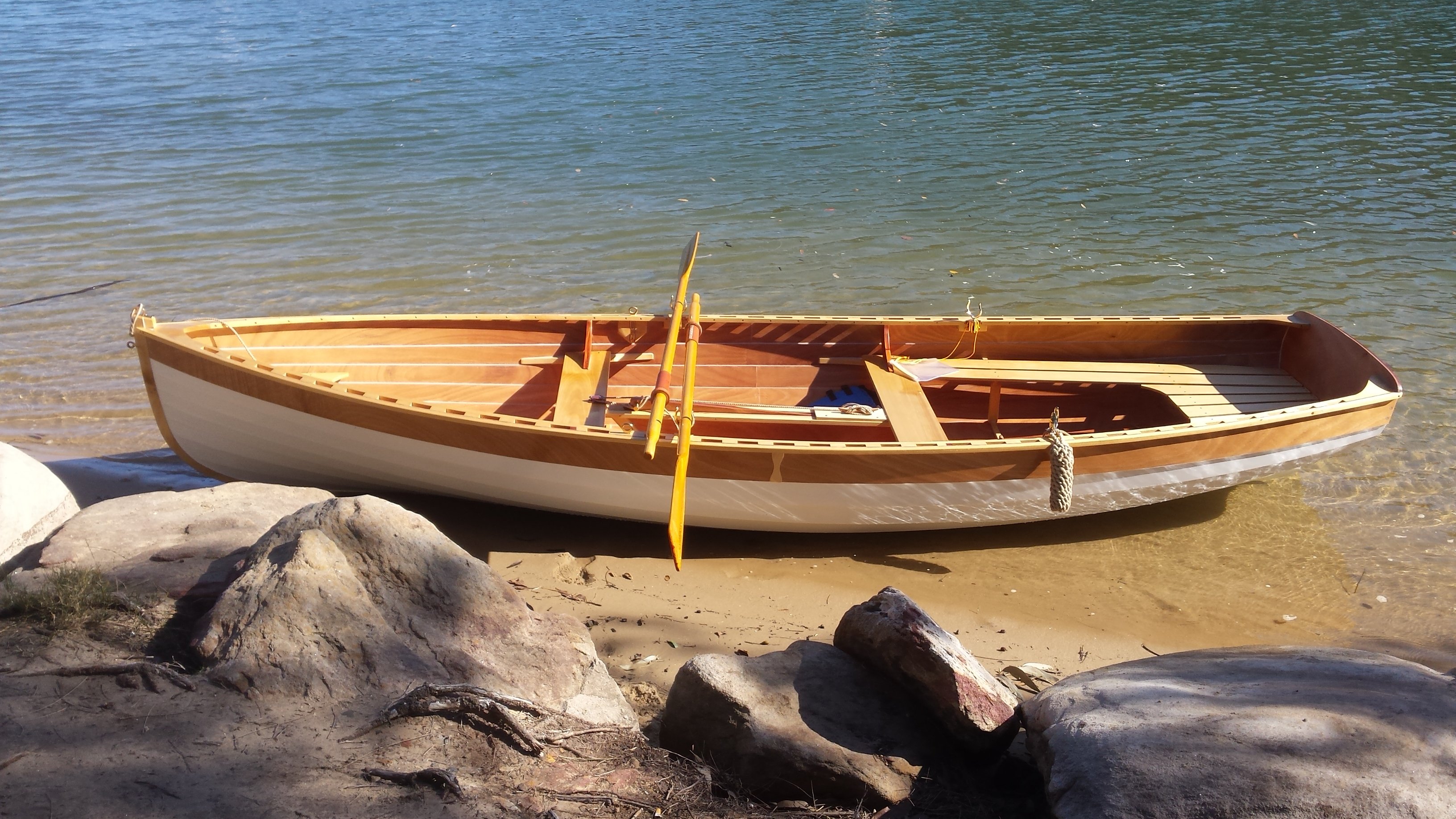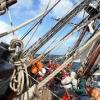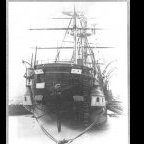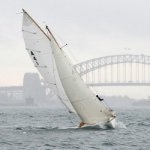MORE HANDBOOKS ARE ON THEIR WAY! We will let you know when they get here.
×
-
Posts
1,281 -
Joined
-
Last visited
Reputation Activity
-
 Bedford got a reaction from ccoyle in Gaff sloop of unknown design c. 1910 by Bedford - RESTORATION - possibly to RC
Bedford got a reaction from ccoyle in Gaff sloop of unknown design c. 1910 by Bedford - RESTORATION - possibly to RC
Yeah, we in Aus tend to shorten names but Oregon Pine aka Douglas Fir or as our Irish shipwright calls it, Irish Pine - O'regon
-
 Bedford got a reaction from Keith Black in Gaff sloop of unknown design c. 1910 by Bedford - RESTORATION - possibly to RC
Bedford got a reaction from Keith Black in Gaff sloop of unknown design c. 1910 by Bedford - RESTORATION - possibly to RC
This might be a long shot but I'm trying to find info on how to design the rig and sails if I go RC and all I keep getting is how to make the sails or very class specific info. Does anyone here know how to design a sail plan or know who does?
-
 Bedford got a reaction from Keith Black in Gaff sloop of unknown design c. 1910 by Bedford - RESTORATION - possibly to RC
Bedford got a reaction from Keith Black in Gaff sloop of unknown design c. 1910 by Bedford - RESTORATION - possibly to RC
Yeah, we in Aus tend to shorten names but Oregon Pine aka Douglas Fir or as our Irish shipwright calls it, Irish Pine - O'regon
-
 Bedford reacted to Jim Lad in Gaff sloop of unknown design c. 1910 by Bedford - RESTORATION - possibly to RC
Bedford reacted to Jim Lad in Gaff sloop of unknown design c. 1910 by Bedford - RESTORATION - possibly to RC
I agree with Druxey wholeheartedly. She's well worth bringing back to life.
John
-
 Bedford got a reaction from mandolinut in Gaff sloop of unknown design c. 1910 by Bedford - RESTORATION - possibly to RC
Bedford got a reaction from mandolinut in Gaff sloop of unknown design c. 1910 by Bedford - RESTORATION - possibly to RC
Some more pics
-
 Bedford got a reaction from wefalck in Gaff sloop of unknown design c. 1910 by Bedford - RESTORATION - possibly to RC
Bedford got a reaction from wefalck in Gaff sloop of unknown design c. 1910 by Bedford - RESTORATION - possibly to RC
Well, this is my second restoration of a model donated to the Lake Macquarie Classic Boatshed. This has been sitting on the Mezzanine for a few years and the lines are just so beautiful I couldn't leave her to be eventually discarded. Did I need another model project at this point, not really but here it is.
We have no idea what she is modeled after but it's in the style of the Fife sloops of the early 1900's and since it has a bowsprit I'm thinking gaff rigged so I'm taking very loose inspiration from the William Fife III designed "Mariska"
It will be "stand off scale" as we used to say n the aero-modelling field. as it may end up with radio control added but let's not get ahead of ourselves.
The hull is 1460 long, so quite large and planked in Oregon which was varnished in what appears to be the old Estapol, that had to go so a hot air gun and scrapers got most of that off with the rest removed by scraping and sanding. This process revealed the truth about her beauty, it's very much skin deep. Some of the planks have been sanded to within 0.02mm of their lives in order to achieve fair lines, you can see light through them! What this means is that whether or not I add RC she's going to have to be fibregassed so I've ordered some 30gsm cloth. Hopefully I can get a good enough finish to allow varnishing over the 'glass but I may need to paint below the waterline anyway to cover water damage and poor fairing of strakes at the stern post.
I can't reinforce the strakes internally as it's quite roughly finished and I'd have to sand back a thick layer of black paint which is over varnish, I'm not prepared for that debarkle and chances are I'd go through the thin strakes anyway. The internal framing is quite substantial and, in places, broken so I'll have to do something to stabilise that and possibly create the room for auxilliary drive should she become an RC sail boat.
Anyway, on to the pics. Oh, and the tabernacle is decidedly agricultural for a model with some beautiful features so it's going.
-
 Bedford got a reaction from wefalck in Gaff sloop of unknown design c. 1910 by Bedford - RESTORATION - possibly to RC
Bedford got a reaction from wefalck in Gaff sloop of unknown design c. 1910 by Bedford - RESTORATION - possibly to RC
Some more pics
-
 Bedford got a reaction from ccoyle in Gaff sloop of unknown design c. 1910 by Bedford - RESTORATION - possibly to RC
Bedford got a reaction from ccoyle in Gaff sloop of unknown design c. 1910 by Bedford - RESTORATION - possibly to RC
Well, this is my second restoration of a model donated to the Lake Macquarie Classic Boatshed. This has been sitting on the Mezzanine for a few years and the lines are just so beautiful I couldn't leave her to be eventually discarded. Did I need another model project at this point, not really but here it is.
We have no idea what she is modeled after but it's in the style of the Fife sloops of the early 1900's and since it has a bowsprit I'm thinking gaff rigged so I'm taking very loose inspiration from the William Fife III designed "Mariska"
It will be "stand off scale" as we used to say n the aero-modelling field. as it may end up with radio control added but let's not get ahead of ourselves.
The hull is 1460 long, so quite large and planked in Oregon which was varnished in what appears to be the old Estapol, that had to go so a hot air gun and scrapers got most of that off with the rest removed by scraping and sanding. This process revealed the truth about her beauty, it's very much skin deep. Some of the planks have been sanded to within 0.02mm of their lives in order to achieve fair lines, you can see light through them! What this means is that whether or not I add RC she's going to have to be fibregassed so I've ordered some 30gsm cloth. Hopefully I can get a good enough finish to allow varnishing over the 'glass but I may need to paint below the waterline anyway to cover water damage and poor fairing of strakes at the stern post.
I can't reinforce the strakes internally as it's quite roughly finished and I'd have to sand back a thick layer of black paint which is over varnish, I'm not prepared for that debarkle and chances are I'd go through the thin strakes anyway. The internal framing is quite substantial and, in places, broken so I'll have to do something to stabilise that and possibly create the room for auxilliary drive should she become an RC sail boat.
Anyway, on to the pics. Oh, and the tabernacle is decidedly agricultural for a model with some beautiful features so it's going.
-
 Bedford got a reaction from ccoyle in Gaff sloop of unknown design c. 1910 by Bedford - RESTORATION - possibly to RC
Bedford got a reaction from ccoyle in Gaff sloop of unknown design c. 1910 by Bedford - RESTORATION - possibly to RC
Some more pics
-
 Bedford got a reaction from GrandpaPhil in Gaff sloop of unknown design c. 1910 by Bedford - RESTORATION - possibly to RC
Bedford got a reaction from GrandpaPhil in Gaff sloop of unknown design c. 1910 by Bedford - RESTORATION - possibly to RC
Well, this is my second restoration of a model donated to the Lake Macquarie Classic Boatshed. This has been sitting on the Mezzanine for a few years and the lines are just so beautiful I couldn't leave her to be eventually discarded. Did I need another model project at this point, not really but here it is.
We have no idea what she is modeled after but it's in the style of the Fife sloops of the early 1900's and since it has a bowsprit I'm thinking gaff rigged so I'm taking very loose inspiration from the William Fife III designed "Mariska"
It will be "stand off scale" as we used to say n the aero-modelling field. as it may end up with radio control added but let's not get ahead of ourselves.
The hull is 1460 long, so quite large and planked in Oregon which was varnished in what appears to be the old Estapol, that had to go so a hot air gun and scrapers got most of that off with the rest removed by scraping and sanding. This process revealed the truth about her beauty, it's very much skin deep. Some of the planks have been sanded to within 0.02mm of their lives in order to achieve fair lines, you can see light through them! What this means is that whether or not I add RC she's going to have to be fibregassed so I've ordered some 30gsm cloth. Hopefully I can get a good enough finish to allow varnishing over the 'glass but I may need to paint below the waterline anyway to cover water damage and poor fairing of strakes at the stern post.
I can't reinforce the strakes internally as it's quite roughly finished and I'd have to sand back a thick layer of black paint which is over varnish, I'm not prepared for that debarkle and chances are I'd go through the thin strakes anyway. The internal framing is quite substantial and, in places, broken so I'll have to do something to stabilise that and possibly create the room for auxilliary drive should she become an RC sail boat.
Anyway, on to the pics. Oh, and the tabernacle is decidedly agricultural for a model with some beautiful features so it's going.
-
 Bedford got a reaction from GrandpaPhil in Gaff sloop of unknown design c. 1910 by Bedford - RESTORATION - possibly to RC
Bedford got a reaction from GrandpaPhil in Gaff sloop of unknown design c. 1910 by Bedford - RESTORATION - possibly to RC
Some more pics
-
 Bedford got a reaction from Keith Black in Gaff sloop of unknown design c. 1910 by Bedford - RESTORATION - possibly to RC
Bedford got a reaction from Keith Black in Gaff sloop of unknown design c. 1910 by Bedford - RESTORATION - possibly to RC
Some more pics
-
 Bedford got a reaction from Jack12477 in Ranger type yacht by Mark Pearse - 1:12 - SMALL
Bedford got a reaction from Jack12477 in Ranger type yacht by Mark Pearse - 1:12 - SMALL
Happy to help Mark, and yes they look much better with than without
-
 Bedford reacted to druxey in Gaff sloop of unknown design c. 1910 by Bedford - RESTORATION - possibly to RC
Bedford reacted to druxey in Gaff sloop of unknown design c. 1910 by Bedford - RESTORATION - possibly to RC
Lovely lines and worth resurrecting!
-
 Bedford got a reaction from yvesvidal in Gaff sloop of unknown design c. 1910 by Bedford - RESTORATION - possibly to RC
Bedford got a reaction from yvesvidal in Gaff sloop of unknown design c. 1910 by Bedford - RESTORATION - possibly to RC
Some more pics
-
 Bedford got a reaction from Keith Black in Gaff sloop of unknown design c. 1910 by Bedford - RESTORATION - possibly to RC
Bedford got a reaction from Keith Black in Gaff sloop of unknown design c. 1910 by Bedford - RESTORATION - possibly to RC
Well, this is my second restoration of a model donated to the Lake Macquarie Classic Boatshed. This has been sitting on the Mezzanine for a few years and the lines are just so beautiful I couldn't leave her to be eventually discarded. Did I need another model project at this point, not really but here it is.
We have no idea what she is modeled after but it's in the style of the Fife sloops of the early 1900's and since it has a bowsprit I'm thinking gaff rigged so I'm taking very loose inspiration from the William Fife III designed "Mariska"
It will be "stand off scale" as we used to say n the aero-modelling field. as it may end up with radio control added but let's not get ahead of ourselves.
The hull is 1460 long, so quite large and planked in Oregon which was varnished in what appears to be the old Estapol, that had to go so a hot air gun and scrapers got most of that off with the rest removed by scraping and sanding. This process revealed the truth about her beauty, it's very much skin deep. Some of the planks have been sanded to within 0.02mm of their lives in order to achieve fair lines, you can see light through them! What this means is that whether or not I add RC she's going to have to be fibregassed so I've ordered some 30gsm cloth. Hopefully I can get a good enough finish to allow varnishing over the 'glass but I may need to paint below the waterline anyway to cover water damage and poor fairing of strakes at the stern post.
I can't reinforce the strakes internally as it's quite roughly finished and I'd have to sand back a thick layer of black paint which is over varnish, I'm not prepared for that debarkle and chances are I'd go through the thin strakes anyway. The internal framing is quite substantial and, in places, broken so I'll have to do something to stabilise that and possibly create the room for auxilliary drive should she become an RC sail boat.
Anyway, on to the pics. Oh, and the tabernacle is decidedly agricultural for a model with some beautiful features so it's going.
-
 Bedford got a reaction from sheepsail in Gaff sloop of unknown design c. 1910 by Bedford - RESTORATION - possibly to RC
Bedford got a reaction from sheepsail in Gaff sloop of unknown design c. 1910 by Bedford - RESTORATION - possibly to RC
Some more pics
-
 Bedford got a reaction from druxey in Gaff sloop of unknown design c. 1910 by Bedford - RESTORATION - possibly to RC
Bedford got a reaction from druxey in Gaff sloop of unknown design c. 1910 by Bedford - RESTORATION - possibly to RC
Well, this is my second restoration of a model donated to the Lake Macquarie Classic Boatshed. This has been sitting on the Mezzanine for a few years and the lines are just so beautiful I couldn't leave her to be eventually discarded. Did I need another model project at this point, not really but here it is.
We have no idea what she is modeled after but it's in the style of the Fife sloops of the early 1900's and since it has a bowsprit I'm thinking gaff rigged so I'm taking very loose inspiration from the William Fife III designed "Mariska"
It will be "stand off scale" as we used to say n the aero-modelling field. as it may end up with radio control added but let's not get ahead of ourselves.
The hull is 1460 long, so quite large and planked in Oregon which was varnished in what appears to be the old Estapol, that had to go so a hot air gun and scrapers got most of that off with the rest removed by scraping and sanding. This process revealed the truth about her beauty, it's very much skin deep. Some of the planks have been sanded to within 0.02mm of their lives in order to achieve fair lines, you can see light through them! What this means is that whether or not I add RC she's going to have to be fibregassed so I've ordered some 30gsm cloth. Hopefully I can get a good enough finish to allow varnishing over the 'glass but I may need to paint below the waterline anyway to cover water damage and poor fairing of strakes at the stern post.
I can't reinforce the strakes internally as it's quite roughly finished and I'd have to sand back a thick layer of black paint which is over varnish, I'm not prepared for that debarkle and chances are I'd go through the thin strakes anyway. The internal framing is quite substantial and, in places, broken so I'll have to do something to stabilise that and possibly create the room for auxilliary drive should she become an RC sail boat.
Anyway, on to the pics. Oh, and the tabernacle is decidedly agricultural for a model with some beautiful features so it's going.
-
 Bedford got a reaction from Mark Pearse in Ranger type yacht by Mark Pearse - 1:12 - SMALL
Bedford got a reaction from Mark Pearse in Ranger type yacht by Mark Pearse - 1:12 - SMALL
Happy to help Mark, and yes they look much better with than without
-
 Bedford reacted to Mark Pearse in Ranger type yacht by Mark Pearse - 1:12 - SMALL
Bedford reacted to Mark Pearse in Ranger type yacht by Mark Pearse - 1:12 - SMALL
One detail that had been bothering me was the winches I purchased, for the running backstays & the mast halyards - nice but technically not very good. Steve from this forum (Bedford) kindly offered to assist & turned up some flanges perfectly to size, the difference is wonderful. They will be soldered together & tinned (thank you Welfack)
the winches before:
and after (now that's a winch):
happy days....
-
 Bedford reacted to Valeriy V in Libertad 1925 by Valeriy V - Scale 1:100 - Spanish Type F Light Cruiser
Bedford reacted to Valeriy V in Libertad 1925 by Valeriy V - Scale 1:100 - Spanish Type F Light Cruiser
Yes, I had that choice, but instead of wood, I was going to use plexiglass.
However, after thinking it over, I realized that making such a plexiglass dummy would take me much more time than soldering a brass frame.
-
 Bedford got a reaction from Mark Pearse in Ranger type yacht by Mark Pearse - 1:12 - SMALL
Bedford got a reaction from Mark Pearse in Ranger type yacht by Mark Pearse - 1:12 - SMALL
Beautiful, as usual. The brass rings are on the way
-
 Bedford got a reaction from Jack12477 in Ranger type yacht by Mark Pearse - 1:12 - SMALL
Bedford got a reaction from Jack12477 in Ranger type yacht by Mark Pearse - 1:12 - SMALL
Beautiful, as usual. The brass rings are on the way
-
 Bedford got a reaction from Knocklouder in Herzogin Cecilie 1902 by Jim Lad - Four Masted Barque
Bedford got a reaction from Knocklouder in Herzogin Cecilie 1902 by Jim Lad - Four Masted Barque
Best wishes John
-
 Bedford got a reaction from FriedClams in Herzogin Cecilie 1902 by Jim Lad - Four Masted Barque
Bedford got a reaction from FriedClams in Herzogin Cecilie 1902 by Jim Lad - Four Masted Barque
Best wishes John











